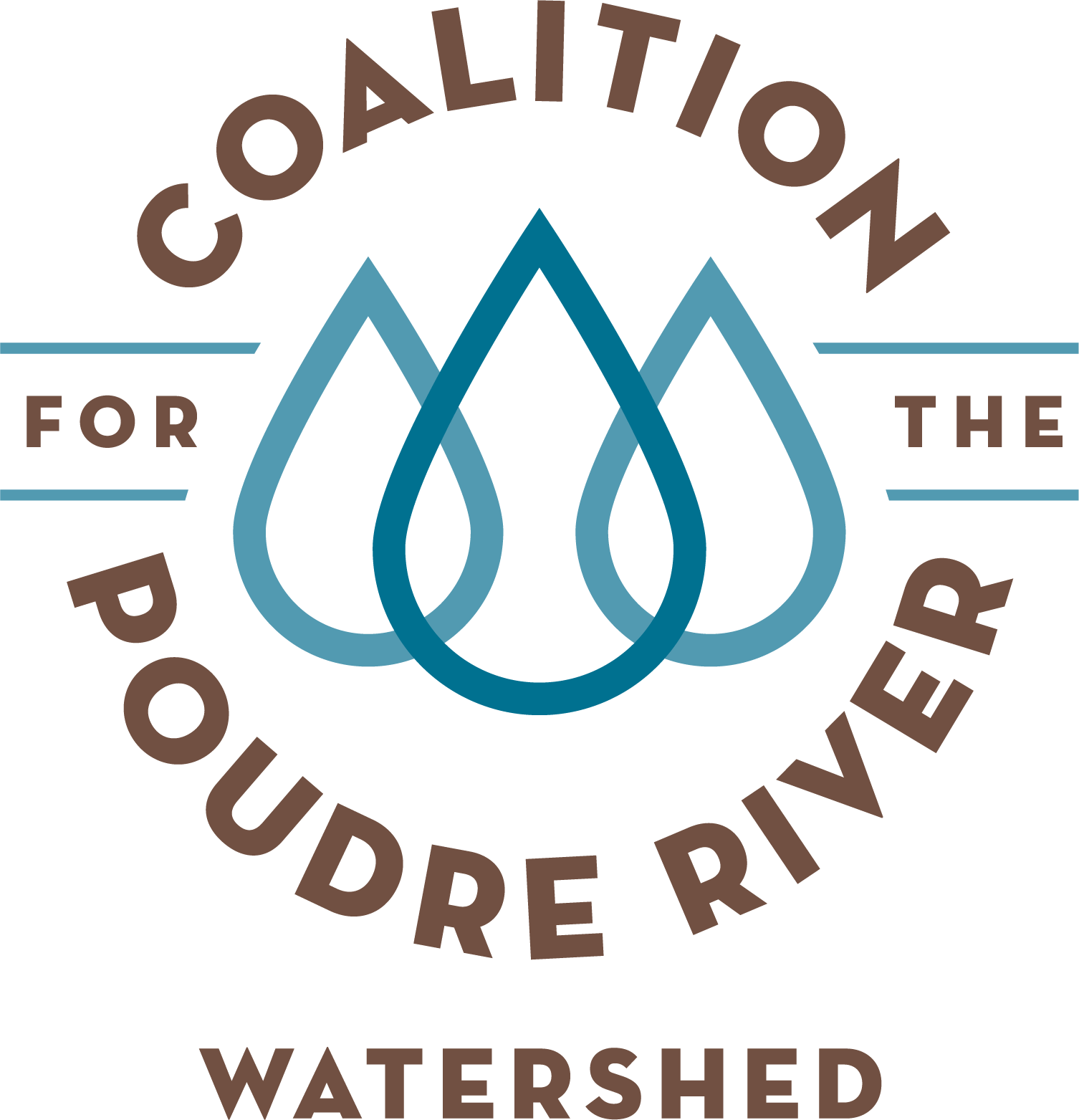Project Update: South Fork Post-Fire River Restoration
Engineered log structures slow spring snowmelt down on the S. Fork of the Poudre, helping to increase hydraulic roughness, reduce flow velocities, and enhance sediment deposition. These structures also improve aquatic habitat and promote additional wood recruitment to the river system (Photo credit: Cory Dick).
The response that we have seen at the South Fork post-fire river restoration site has been almost textbook for process-based restoration. As the high flows from snow melt runoff have traveled down from the mountains, we have seen water hit the wood structures and slow down. Much like cars breaking as they approach and crest over a speed bump. This has caused water to spread across the lower portions of the floodplain, increasing the moisture in areas where we hope to see riparian vegetation expand in future years. Due to our partnership with Colorado State University and Rocky Mountain Research Station, we hope to see the quantification of that expanded moisture in the soil profile in the coming years.
We planted 300 cottonwood stakes that were collected from downstream of the South Fork site and grown for a year in a local plant nursery. This additional year of growth allows the cottonwoods to grow larger and have a better chance of survival after planting. Another way we prepare our plantings for success is to collect cottonwood cuttings as close to the project site as possible. This way they are adapted to the local conditions (think temperature and precipitation). 300 willow stakes that were collected the year prior were also planted to assist in expanding riparian vegetation.
To protect the plantings and any new growth that is responding to the increases in moisture, we are building buck and rail fencing around the project area. Since this is public land and used for multiple purposes (including grazing), the fencing will exclude grazing and potential trampling by hooves. This fencing will not exclude native wildlife that could jump over, step over or crawl under the wooden fence.
Finally, the increased pooling behind the structures has continued to draw in beaver, who have resumed cutting down willows from the banks of the channel and adding them to our structures. We have seen expanded evidence of beaver chew and the addition of the branchier and finer materials brought in by the beaver has created a positive feedback loop. Less porous instream structures create slower water, pushing water farther out onto the floodplain and creating more habitat for species that rely on riparian vegetation (like beaver!).
Thank you to our partners and funders who have made this project possible: U.S. Forest Service, Ayres Associates, AloTerra Restoration Services, FlyWater, Colorado State University (Research & Monitoring), Colorado Department of Public Health and Environment (CDPHE), Colorado Water Conservation Board (CWCB) and Mossy Earth.
Buck and rail fencing was installed to protect the site from cattle grazing (Photo credit: Cory Dick).
Volunteers help harvest willow stakes for river restoration and riparian plantings (Photo credit: Megan Maiolo-Heath)
South Fork Poudre Post-Fire River Restoration Project - Spring 2025 (Photo Credit: Ayres Associates)




